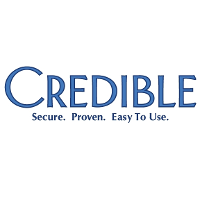Cville Merton Review of Credible Behavioral Health Sof...
I have used five EHR systems as a psychiatrist. Cr...
I have used five EHR systems as a psychiatrist. Credible is the 4th worst in terms of user-friendliness out of 5 (the only one worse was called Mindlinc) in my opinion.
My score of 2 out of 5 stars is like a grade of 40 out of 100 a badly failing grade.
Physicians' and clinicians' suggestions for specific changes (that would save us time/work/frustration), even when repeated for months (in one case, years), nearly always led to no change and usually no explanation. This is light-years from "stellar" customer support which Credible claimed. The lack of responsiveness led me to stop requesting changes. NOTE: I want credible to become better. So, if things get better significantly, I will update/correct this review.
Examples of being user-unfriendly:
Finding information (e.g., vital signs, diagnoses, medications) requires too many steps and screens. (Why not put what we need on one or two screens? )
There is useless information on the home screen, including information about patients we don't see in our department. (Why not make the home screen our schedule?)
In the schedule, appointments line up haphazardly on the time-grid so that a 1:30 appointment can look like it's at 2. The schedule is cluttered with appointments that are no longer happening.
Nearly every screen requires extra clicks to see key information ; for example on the list of medications you've prescribed, you have to click on a tiny symbol on the far side of the screen to find the pharmacy and refills.
To change the dose of a medication requires several windows to discontinue the current dose (including a window asking why you're stopping the med; but if you type a response, it isn't recorded anywhere I can find). Then to prescribe the new dose, you have to again search & scroll through medication lists which are not alphabetized or ordered by milligram strength. (You can generate a frequently-prescribed medication list -- but the list is too cumbersome and out of order; it doesn't help me.)
Most screens require scrolling. And you can't downsize the screen to fit because that would lose information on the right half of the screen.
With a patient in the room, I find it too difficult to work in Credible and feel really present with the patient. This decreases quality of care and creates more work after the appointment.
In the diagnosis search window, if you type "ADHD", you get zero results. If you type "depression", you get seven results but none for major depression. "major depressive disorder recurrent" gets zero results because you left out a comma. If you perfectly type "major depressive disorder, recurrent episode, moderate" you get zero options but then, if you replace "moderate" with "mo", it works.
To change depression diagnosis from, e.g., 'moderate' to mild' takes about 14 steps.
A search for past psychiatric notes does not pull up the initial psychiatric evaluation. And the results are not consistently in chronological order.
Clicking can requires video-game-like precision (If you don t click in the middle of a tiny box, nothing happens. Why not a big box? Or click anywhere on the sentence we want to select?)
There are disruptive delays between screen changes (which is another reason to minimize screen changes!). Credible has 3-D-type graphics that look like the binding of a spiral notebook but, if that takes time to load, I d rather have the time. Every pause breaks my train of thought.(NOTE - this happens even when other computer programs work at high speed).
Credible is very difficult to navigate on a smart phone. They developed an app but It took a couple hours to originally access it. Then each time I tried to use it, it took about five minutes to load. (You could not do anything on your phone while it loaded.)
I had written more examples but this review had a limited space.

Comments: